Former Maple Leaf Gary Leeman looks back on the shot that changed his life
Head trauma altered the career of Toronto Maple Leafs veteran, leading him to help others in their retirement years.

Article content
The shot you don’t see coming can leave the biggest scar.
So when Gary Leeman came around after an Al MacInnis slap shot struck just behind his ear, looking up at worried Maple Leaf teammates, on-ice officials and doctors, his first semi-conscious flash was to fear the worst.
“I’d hit the ice, believing ‘This is it, I’m gonna die,’ ” Leeman recounted that night of Oct. 16, 1988. “Those around me said I was making horrifying noises. I was down awhile, struggling to get my bearings. It got pretty traumatic. I knew right then the puck likely cracked my skull.”
He was correct in diagnosing the injury, but fortunately wrong about its finality or it being career-ending. Leeman went on to score 51 goals the next year and eventually win a Stanley Cup with Montreal. But the next six and a half years turned the young winger from East End Toronto into a different person. A young man’s joy of playing his chosen sport for good money and hometown adulation was re-routed to a difficult dual path of body recovery and mental regression.
The latter nearly drove him out of hockey.
Today, a similarly stricken player would take a precautionary hiatus, maybe injured reserve or LTIR. Leeman was asked if he wanted to play the very next game, blindly adhering to hockey’s oldest code of playing through pain, keeping your job and damn the consequences. The price would be enormous in his active days and in retirement would lead him to fight on behalf of other National Hockey Leaguers vexed by head injuries.
“Getting hit by that puck changed my life,” the 61-year-old told Postmedia over the lunch table.
Let’s first rewind to when almost every NHLer feared being in the firing line of MacInnis, long before there was a hardest shot competition at the all-star game. With a release perfected against the side of his family barn in Cape Breton, N.S., his was clocked at 100-plus miles per hour. He’d infamously split goalie Mike Liut’s mask on one blast and kept maintenance men in every rink on high alert to replace shattered Plexiglass.
MacInnis once broke a piece of the back board in St. Louis, too.
“The Flames could really move the puck and I was out covering the left point, trying to stay in front of his shot,” Leeman related. “But MacInnis moved closer to centre and my head turned toward our net. I heard his release, but the shot was deflected (by teammate Al Iafrate). I felt a clunk on the left side of my head, with intense pain and instant ringing in my ear. Like someone had snuck up behind with a baseball bat and whacked you.
“As I lay there, it didn’t help me knowing MacInnis had shot it. Your only thought at the time was survival. I do recall saying to myself, if you (pass out), you’re not going to wake up.’ It was that serious.”
Toronto’s trainer, Guy Kinnear, quickly attended Leeman, but under frugal owner Harold Ballard, the Leafs didn’t employ a year-round athletic therapist. And this was definitely not a shot block Leeman could simply skate off.
“I’d never throw Guy under the bus; it wasn’t his fault he didn’t have the training for what happened,” Leeman said. “I felt better recognizing Dr. Leith Douglas’ voice. Though I couldn’t see him, he was the best emergency room doctor in town. He asked me some questions, but if one was: ‘How many fingers am I holding up?’ I couldn’t have answered then.”
Still in his gear, Leeman was assisted off the ice, stretchered by ambulance to the Wellesley, the closest hospital to the Gardens then. The x-ray process, testing and whether he even stayed overnight are still blanks to him.
“Looking back, it wasn’t a mystery, it was a concussion. I was fighting blurred vision, white lights, everything they (league spotters) look for today. But concussions were dealt with a lot differently. The trainer delivered you after the game to a teammate, wife or girlfriend and just said ‘wake him up every hour,’ or ‘give him a couple of beers.’ ”
Indeed, Leeman was in the lineup three nights later to start a road trip on Long Island. The team did give him the option to sit, but both parties knew he was expected to play.
“You feared someone else would take your job. It was all about the culture and the intimidation on many different levels to stay in there.”
He did assist on good friend Ed Olczyk’s winning goal. But held to two shots on net an evening later in beating Minnesota, he know his head was not right.
When the Leafs returned home, another team doctor, Simon McGrail, took a closer look. The shot had mushed Leeman’s mastoid bone behind the ear, a honeycombed structure that had subsequently filled with blood. McGrail froze the ear drum, vacuumed out the blood. Leeman had not slept properly since the mishap, while ominous new symptoms crept in.
The mastoid starts at the base of the skull, connected to several muscles down the neck, which attach at the collarbone and breastbone. By getting struck on the left side of the mastoid, it led to weakness being able to properly hold up his head.
“It got worse with each hit. That’s when I realized how dangerous this was to continue playing, too crazy if I wasn’t 100%.
“All the while, you wonder: ‘What’s wrong with me?’ I was really frustrated because this was my time, I was getting a great opportunity as a go-to guy, killing penalties, being on the power play. Now I couldn’t play anywhere close to the stellar start I’d had.”
Many complications arose from the fatigue factor, even after he took a little time off.
“The ringing was still there, like three weeks of having a telephone go off in your ear. My body would melt into the bed, but my mind would not shut off at night. No matter how hard you tried, how young and strong you were, the effects started to show.
“It was all catching up to me, the anxiety and stress. When you’re that fatigued and trying to take stimulants such as coffee, it gets worse.
“I believe they led to my panic attacks, which like the anxiety, I’d never had in my life. You wonder: ‘Am I losing my mind?’ ”
The tipping point was a late November flight to Los Angeles. The only warm-weather destination in the league. It was a trip every club relished. But Leeman was hardly sharing in the excitement.
“I was sitting behind Mark Osborne and Eddie. Out of the blue, another wave of panic comes over me. Ozzie picks up on it right away, asking: ‘What’s the matter?’ I told him it was nothing — because I wasn’t ready to share it with anyone at that point.
“Before getting hit, I’d never had a problem with heights, but now, standing on a balcony had become difficult. Now you’re at 30,000 feet and something like that happens … let’s just call it the worst flight of my life. I had no control over those feelings.”
When they finally landed, Leeman asked to room alone, but couldn’t close his eyes.
“I finally called Guy at 2 a.m., ‘I’m having problems, get me outta here.’ ”
He took a 6 a.m. flight home, with the team concocting an injury cover story.
“At that stage, I definitely wanted answers. But it was hard for me to go through doctors hired by the team. They’re good men, very qualified to treat hockey injuries, but I could not feel comfortable going to a doctor who didn’t specialize in my issue, which we didn’t have then.
“You’re also unsure how team doctors would explain it to management. Today, it’s all right to seek a second outside opinion.”
Like many talented players, Leeman had thought he was cloaked in a kind of invincibility.
“I’d get home from a game or practice and might go on a five-mile run because I was on such a natural high, especially if I felt I didn’t play enough. You’re going on all cylinders with fitness levels off the charts and now I was in this free-fall; on top of the world one day to fighting for my life. It was a long drop, with stress, anxiety and the panic attacks.”
He didn’t know it, but help was on the way.

As Leeman took a breather at home, a deeply concerned Osborne pulled him aside. Osborne learned the hard way about losing those close to him who’d masking their troubled mindset after his father committed suicide in the early 1980s.
“For Ozzie to tell me his personal story about his dad, it gave me that trust to speak openly with him.”
In their conversations, Osborne recommended a book.
“Ozzie is known as a very religious guy, so my first thought was he’s giving me a bible,” Leeman said with a laugh. “But he hands me Hope and Help for your Nerves by Dr. Claire Weekes. It looked like a $5 book you’d get in a remainders’ bin. But it was so what I needed.”
From the Australian psychologist’s original 1969 step-by-step guide to dealing with nerves and anxiety, Leeman’s mind opened to Weekes’s ‘learned responses’. Her mantra was to do the opposite during such ‘disorders of thought’, to let the anxiety in, but understand ‘how you think is how you feel’.
Among her examples was while the heart may skip a beat in a heightened state of adrenalin, or hands might start shaking, the key is realizing they’re both perfectly healthy body parts, that were just off a bit.
Leeman, who had been offered tranquilizers, drank lots of coffee and partook in traditional post-game beers in vain hopes of helping his cause now discovered the stimulants and depressants were only “stiffening” his nerves rather than relax them.
“When nerves are calm, they float,” he said of the best analogy he took from Weekes. “But if you over-stimulate, they don’t work properly.
“I’ll never forget being at someone’s house and watching a fork fall from the table to the floor. It was 10 seconds later that the clatter of it hitting the tile resonated and really shocked me.
“I learned to process negative thoughts, such as the ones I’d had on the plane. Even if you think your heart is going to explode, recognize that nothing happened the last time you had that feeling and tell yourself it won’t happen again. Treat it like an old enemy, maybe a rival team or certain player, and say ‘Ah, you again. I’ve defeated you before, I’ll do it once more.’
“You improve further and further. The book was the tool I used to fix a lot of things.”
The episodes dissipated to stretches of weeks, months and then years of peace.
“I haven’t had one since I played in Montreal (in the mid-90s). I’d laugh and tell myself it’s not happening again. I have my confidence back, it’s that strange, but that simple. I hope someone seeing this will benefit.”
Leeman was traded to Calgary in 1992, part of the record 10-player Doug Gilmour deal, and while more commonplace hockey injuries slowed his career (such as a separated shoulder) he did find success in contributing to the Canadiens’ Cup. He played parts of three more seasons with Montreal, Vancouver and St. Louis, then two years in Europe.
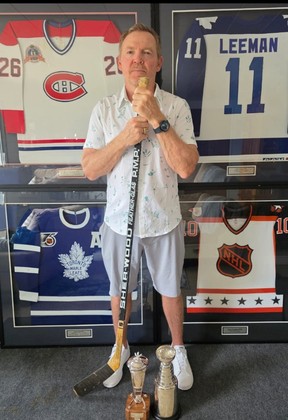
By the early 2010s, he joined many Leafs and NHLers in rewarding charity tours across Canada. But his inner struggles had remained his secret, until a Legends of Hockey bus trip through the Martimes. During a team dinner at The Keg in Halifax with tour emcee Rod Black, talk turned to the worst injury each veteran had endured. Leeman dropped his guard and detailed his skull fracture and aftermath.
“Rod immediately asked if I’d come on his SiriusXM radio show. I was very hesitant, but he reminded me it could help someone. I realized it would be healthy to get it out there and live with any consequences.”
Leeman found a rapt listener in Toronto, Dr. Martin Katzman of the Canadian Anxiety and Mood Disorders Association. He quickly phoned the studio for Leeman’s contact info. Unsure if Leeman would get his message or respond to it, Katzman was relieved to have his call returned within the hour.
“He told me that by doing Rod’s show, I’d probably already saved a life,” Leeman marvelled. “There was a stigma about people not wanting to discuss their struggles with mental health.
“Martin and I ended up meeting several times. He opened a clinic in downtown Toronto called START (Stress, Trauma, Anxiety, Rehabilitation, Treatment).”
It was timely for Leeman to open up as treatment of concussions was becoming a thorny issue in hockey, clouding the minor level up to troubled 20th century NHLers from the fighting/obstruction/reckless hits era.
With great interest, veterans watched in the early 2010s as lawsuits mounted against the National Football League by its rank and file about concussion related brain injuries, resulting in a 2013 class action.
“I’d had those injuries,” Leeman said. “That language should have been in our CBA but wasn’t. We knew by then there were cognitive injuries in hockey, too. Yes, we knew we could get hurt, but no one understood a lot about neurodegenerative disease. That was kept from us.
“It’s no fluke that Gordie Howe, Bobby Hull, Stan Mikita, Andy Bathgate, big strong guys, were later diagnosed and some revealed to have had CTE (chronic traumatic encephalopathy) and other forms such as Parkinson’s Disease.
“We talked to Mel Owens, a former football player familiar with the NFL suit, and started sending our guys to be tested by (independent) doctors.”
In 2013, a group of vets went the class action route in U.S. federal court, eventually numbering 318 members. Leeman’s name was prominent along with former Toronto captain Rick Vaive, Curt Bennett, Bob Manno and others.
“The other guys called me about what I’d been through and our mutual feeling the culture had to change,” said Leeman, who was well aware his and Vaive’s status as Leaf stars guaranteed the suit would get media attention in Canada.
The group knew its push wouldn’t be easy. NHL general managers had opposed some head injury-based rule proposals and a few old school players felt concussion risk was an accepted part of a high-contact sport, one in which many had been richly rewarded. They included recent members of the NHL Players Association who were coaching, scouting and working at key executive posts throughout the league.
Many retired players had sons or relatives trying to break in the league and the veterans had no wish to impede their progress.
The conflicting arguments highlighted that at times, the Alumni’s elders and the PA haven’t been on the same page. It’s still a concern today, many vets feeling left out by the league’s lucrative 21st century business model that advanced with the recent peaceful conclusion of the CBA extension with the union.
“Yet (the 2013 legal action) was a doorway for us to get health care for the injuries we acquired in our pro careers as guys started to notice their conditions worsen,” Leeman explained. “We needed a program for down the road, for us and our families for those who need treatment in years to come.
Leeman termed it “pretty intimidating” to face off against the league in court, though believes the players presented a good case in relation to their gridiron comrades.
“I’m not trying to say NFLers have it easier. They’re basically a car wreck on just about every play. But we have five times the chance of developing neurodegenerative disease. We have glass and boards to contend with which can stop our momentum on skates immediately — and our brains are travelling just as fast. It’s not just enforcers with the most exposure to head trauma. The rest of us are always giving checks or taking checks.”
“We just weren’t given info on things the league should have known. The American Medical Journal, back in 1929, was already talking about Punch Drunk Syndrome (an early link to CTE).”
In 2018, the players were given a lump sum of $18.9 million US, though the league did not admit liability and distribution of the funds has been limited, in Leeman’s case a modest monthly stipend. Meanwhile, more than 1,600 NFLers have had the opportunity from their settlement to get a piece of a pot that has risen to more than $1 billion.
“I wasn’t involved for the money and no one was going to get rich off it,” Leeman insisted. “But once you’re retired and not involved with the PA, extended health care is a different thing. We’re lucky in Canada, but players in the U.S. need much more and it might have to come from their own pocket.
“I just wanted to be on the right side of history, without throwing people such as trainers under the bus. We’d played in good faith, but wanted to negotiate (compensation) in the CBA. The league knew, or should have known, what concussions could lead to.
“You are laying blood, sweat and tears out there and the game is built on what the previous generation had to endure. People such as Carl Brewer, Ted Lindsay and many more were sticking their necks out for us, so we had to act (in memory) of them. There’s not a lot of help or programs for the Joe Murphy’s of today’s world (the ex-Red Wing discovered homeless and dealing with mental instability in 2018), although I know the PA is trying.”
Leeman lives in relative solitude a couple of hours north of Toronto, has a girlfriend but never married, and dabbles in non-hockey related business.
“We’re trained to think a certain way when we’re younger,” he concludes. “As hockey players, we’re not branding ourselves to be on a box of Wheaties’ cereal. We’re team guys who shut up and play. It’s a culture, so we need to continue the conversation and I’m proud to feel I’ve done my part to help other players,
“I went through a lot of wear and tear and have to stay active, work on my own health.I have great family and friends. I wake up every day happy — because I wake up.”
What if the Leafs played the Canadiens in the 1993 Cup final?
It’s the most passionate ‘what if’ hockey debate any time bitter Leafs fans mingle with Montrealers: Which rival would have won in 1993, in what’s often called the best modern-day all-Canadian Stanley Cup final never played.
Habs or Buds? Doug Gilmour vs. Patrick Roy? The feisty Leafs, who played three seven-game series or the Canadiens, good and lucky with 10 overtime bounces their way that spring?
The backdrop would’ve been the 100th anniversary of the Cup and the first final involving the league’s oldest combatants since 1967.
Listening to blue-bloods in the ensuing decades, the hypothetical match was not in doubt. From pundits to Leafs players themselves, everyone was sure the Pat Burns-coached club would’ve beaten the Canadiens had Kerry Fraser, Wayne Gretzky and a few other factors not stopped Toronto in Game 6 and 7 losses to Los Angeles.
“I’ve heard the same thing,” Gary Leeman, the one-time Leaf who wears a Cup ring from Montreal’s defeat of the Kings, said with a laugh. “It’s a great question. Growing up in Toronto, having either team win would’ve been great.
“But I can honestly tell you we’d have been hard to beat. The Leafs had just played (21 games in 42 days) and we’d had so much rest.
“Add to that Patrick, who was on another planet and in such a groove. He’d been pulled in our first series and just wasn’t coming out after that. The Islanders beat Pittsburgh to give us a big break (avoiding Mario Lemieux before beating New York for the conference title).”
Leeman recalls the Canadiens gathering to watch Game 7 of Leafs-Kings at a Montreal hotel, an eventual 5-4 L.A. win. He concedes the Leafs could’ve had a size advantage in the final and respected their formidable defensive strategy.
There also was Burns’ burning desire to beat his successor behind the Habs’ bench, Jacques Demers. But to Leeman’s point, offensive balance and Roy’s Conn Smythe Trophy performance overwhelmed the Kings.
“My own perspective was playing the Leafs or Gretzky in the final would’ve both been meaningful,” Leeman said. “Toronto handled us during the season. But as good a team as the Leafs were, you wanted to beat the best player in the game and put that notch in your belt.”
The Canadiens lost the opener, then knocked L.A. out in five games, Canada’s most recent Cup parade to date.
“I know that must have been heart-breaking for Leafs fans,” Leeman said. “But in the end, there can only be one team of destiny a year.”
Pool party gone wrong – for the Cup
First rule of a private Stanley Cup party: Don’t lose the Cup.
Leeman recalled it was somehow misplaced while members of the 1993 champion Canadiens were making merry at goalie Patrick Roy’s house.
“Everyone was there with their families having a great time and a karaoke machine was going,” Leeman said. “We’d had the Cup around his pool for pictures, but later in the afternoon, couldn’t find it.
“We wondered if the keeper of the Cup had taken it away, until someone went to the edge of the deep end of the pool and spotted something silver. The water was kind of murky at that point with all the spilled drinks, so we sent one of the young guys, maybe it was Patrice Brisebois, to dive in and get it.”
It should be pointed out this wasn’t the first underwater adventure for Stanley, who had been dropped in Mario Lemieux’s pool during one of Pittsburgh’s two celebrations in 1991 and 1992. But surfacing at Lake Roy, the Cup was worse for wear.
“We were kind of horrified, the bowl at the top was bent back and the black bottom (rim) had come off,” Leeman said. “The bottom we fixed ourselves, but when we looked inside we saw the Penguins had scratched their names inside the base. So we did, too.”
Thankfully, the dent in the bowl quickly was fixed — only to be damaged the next year by the hard-partying New York Rangers.
X: @sunhornby





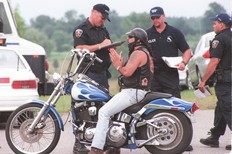
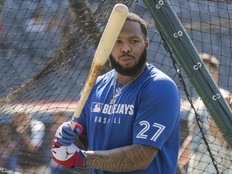
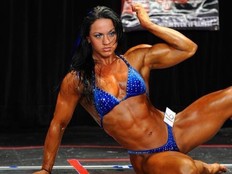
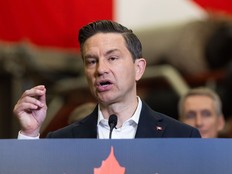
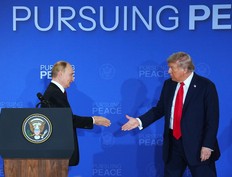

Postmedia is committed to maintaining a lively but civil forum for discussion. Please keep comments relevant and respectful. Comments may take up to an hour to appear on the site. You will receive an email if there is a reply to your comment, an update to a thread you follow or if a user you follow comments. Visit our Community Guidelines for more information.